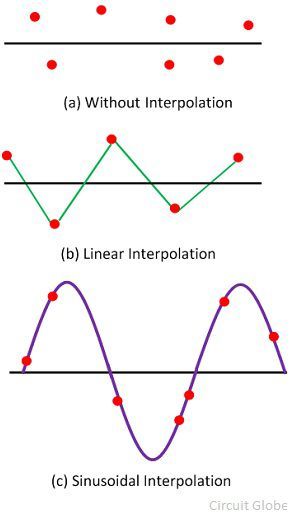Definition: The digital storage oscilloscope is defined as the oscilloscope which stores and analysis the signal digitally, i.e. in the form of 1 or 0 preferably storing them as analogue signals. The digital oscilloscope takes an input signal, store them and then display it on the screen. The digital oscilloscope has advanced features of storage, triggering and measurement. Also, it displays the signal visually as well as numerically.
Working Principle of Digital Storage Oscilloscope
The digital oscilloscope digitises and stores the input signal. This can be done by the use of CRT (Cathode ray tube) and digital memory. The block diagram of the basic digital oscilloscope is shown in the figure below. The digitisation can be done by taking the sample input signals at periodic waveforms.
The maximum frequency of the signal which is measured by the digital oscilloscope depends on the two factors. Theses factors are the
- Sampling rate
- Nature of converter.
Sampling Rate – For safe analysis of input signal the sampling theory is used. The sampling theory states that the sampling rate of the signal must be twice as fast as the highest frequency of the input signal. The sampling rate means analogue to digital converter has a high fast conversion rate.
Converter – The converter uses the expensive flash whose resolution decreases with the increases of a sampling rate. Because of the sampling rate, the bandwidth and resolution of the oscilloscope are limited.
The need of the analogue to digital signal converters can also be overcome by using the shift register. The input signal is sampled and stored in the shift register. From the shift register, the signal is slowly read out and stored in the digital form. This method reduces the cost of the converter and operates up to 100 megasample per second.
The only disadvantage of the digital oscilloscope is that it does not accept the data during digitisation, so it had a blind spot at that time.
Waveform Reconstruction
For visualising the final wave, the oscilloscopes use the technique of inter-polarization. The inter-polarization is the process of creating the new data points with the help of known variable data points. Linear interpolation and sinusoidal interpolation are the two processes of connecting the points together.
In interpolation, the lines are used for connecting the dot together. Linear interpolation is also used for creating the pulsed or square waveform. For sine waveform, the sinusoidal interpolation is utilised in the oscilloscope.



Thanks circuit globe
Thanks maam
Good